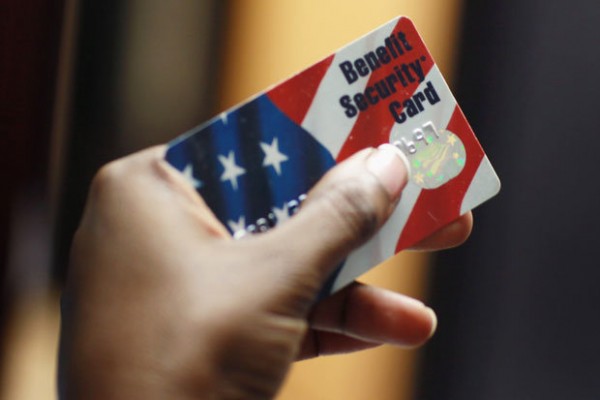
Advertisement
For some 500,000 recipients of public assistance programs like welfare, the taxpayer-supported livelihood ends in just a few days. In fact, according to some estimates, the number could be closer to 1 million.
That’s because by the 9th of February, welfare benefits in 23 states run out and that “tough love” means that scores of people who have been content to allow themselves to be taken care of by working folks are going to have to figure out how to fend for themselves, US Herald reported.
And boy, are they going to have a hard time trying to get by in Obama’s economy.
As noted by the Center on Budget and Policy Priorities, the potential loss of benefits for hundreds of thousands will play out over the course of the year, in actuality, “due to the return in many areas of a three-month limit on SNAP benefits for unemployed adults aged 18-49 who aren’t disabled or raising minor children.” In all, 23 states chose to reinstate the time limit this year; others could follow.
The 90-day window is part of a 1996 welfare reform law nicknamed “workfare” by Congress and the Clinton administration. Under the provision, childless Americans who are not disabled can only qualify for three months’ worth of SNAP benefits in a 36-month period when they are out of work, or not in job training at least 20 hours per week.
The Center on Budget and Policy Priorities, a liberal organization, decried the re-imposition of the rule:
Because this provision denies basic food assistance to people who want to work and will accept any job or work program slot offered, it is effectively a severe time limit rather than a work requirement, as such requirements are commonly understood. Work requirements in public assistance programs typically require people to look for work and accept any job or employment program slot that is offered but do not cut off people who are willing to work and looking for a job simply because they can’t find one. In fact, SNAP has separate work requirement authority much like this, where states can require individuals to participate in job search or a training program but cannot terminate them if no program is available.

In reality, however, states that had already begun to limit welfare and unemployment benefits were seeing positive results – as in, fewer people on the dole and more people in the workforce.
One of those states is North Carolina. As noted by Charlotte Hays writing at TownHall.com, when the state began limiting the amount of time residents could draw unemployment benefits, the number of beneficiaries went down and the number of employed North Carolinians rose. Citing a MarketWatch report, Hays noted that after North Carolina implemented the limit in 2013, by November of that year unemployment had fallen to a five-year low. Similar, albeit less dramatic, results were seen in Georgia and South Carolina when those states opted to limit benefits in 2012.
MarketWatch added:
North Carolina’s jobless rate rose a notch to 8.9% in July and then began a steady descent: 8.7% in August, 8.3% in September, 8.0% in October and a preliminary 7.4% in November, according to U.S. Labor Department figures.
That’s the lowest rate since late 2008, though monthly numbers are prone to sharp revisions.
Regarding the 1996 welfare (workfare) reform act, the Heritage Foundation noted that welfare caseloads dropped by half while unemployment and earnings figures soared, making the reform law a smashing success. The significant drop in welfare payouts no doubt helped Congress and President Bill Clinton achieve balanced federal budgets and even surpluses towards the end of Clinton’s two terms in 2001.
The think tank noted:
Rather than keeping people trapped on government welfare—for an estimated average of 13 years prior to the reform—the new law sharply reduced the number of people entering welfare and moved those who were on government assistance into work. The child poverty rates declined significantly. Roughly 3 million fewer children lived in poverty in 2003 than in 1995, including 1.2 million fewer black children, marking the lowest level of black child poverty in the nation’s history.
Liberals are still hollering about the newly re-imposed time limit for benefits, but history shows it is the correct policy to follow.
Sources:
The Center on Budget and Policy Priorities
Submit a correction >>
This article may contain statements that reflect the opinion of the author
Advertisement
Advertisements















